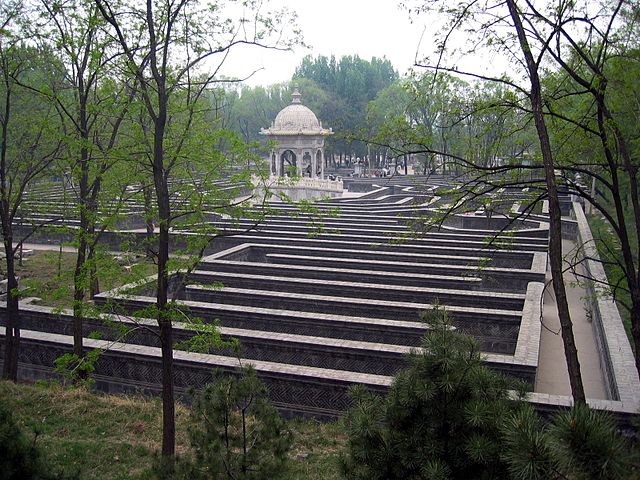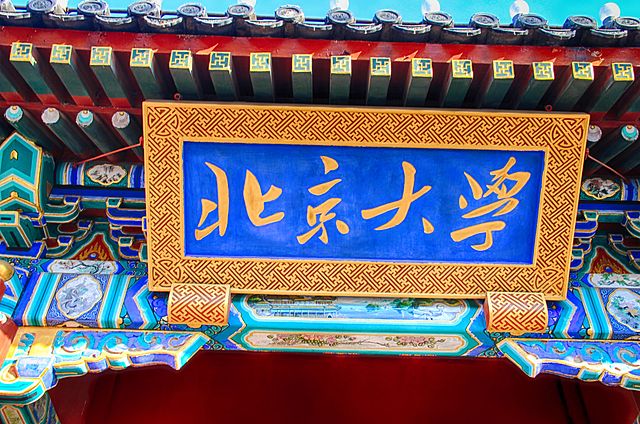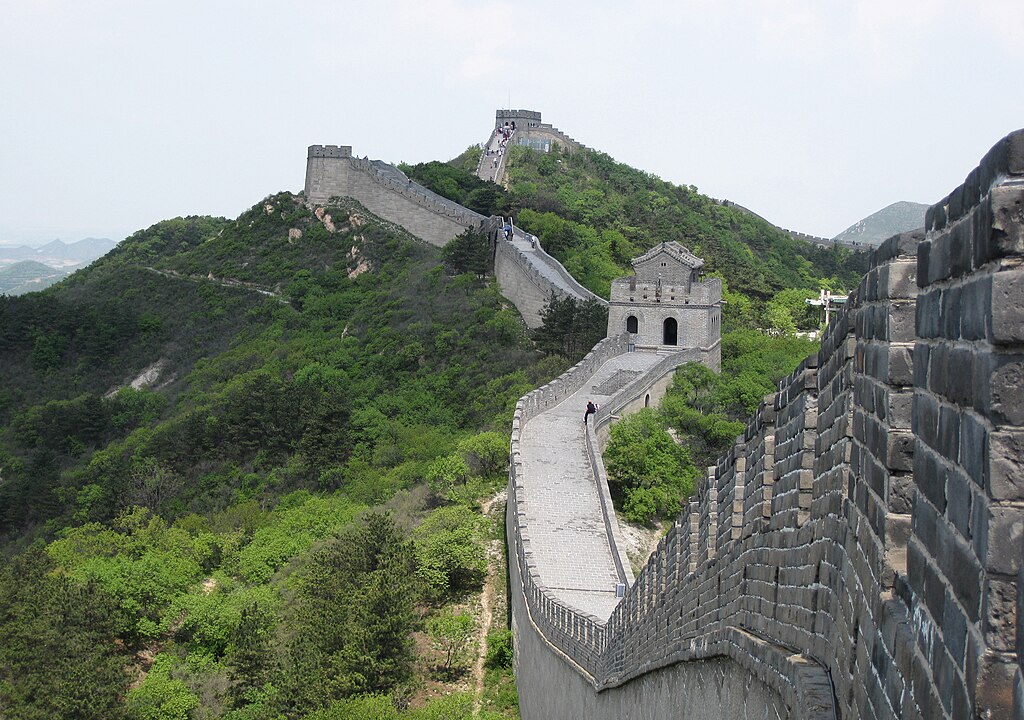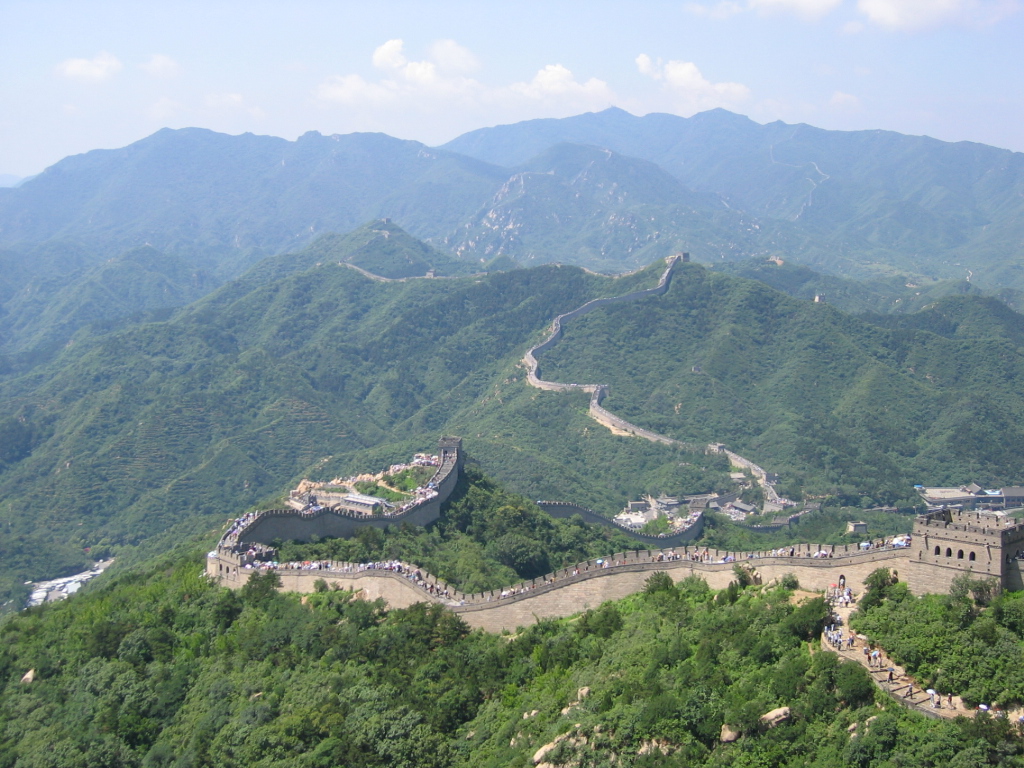As the capital of modern day China and many of its past dynasties, Beijing has a long and rich history dating back over 3,000 years. Constantly reinventing itself over the centuries, this great city is as compelling as it is complex.
Beijing
Tiananmen Square is a large city square in the centre of Beijing, named after the Tiananmen ("Gate of Heavenly Peace", built in 1415 during the Ming Dynasty) located to its north, separating it from the Forbidden City. The square contains the Monument to the People's Heroes, the Great Hall of the People, the National Museum of China, and the Mausoleum of Mao Zedong (known as the founding father of the People's Republic of China). Tiananmen Square one of the largest city squares in the world, with about 0.5 square kilometer or 109 acres.
The Forbidden City was the Chinese imperial palace from the Ming dynasty to the end of the Qing dynasty (from 1420 to 1912) Its construction spanned over 14 years from 1406 to 1420. The complex consists of almost 1000 buildings covering 180 acres and now houses the Palace Museum. It was declared a UNESCO World Heritage Site in 1987. The Forbidden City is a rectangle surrounded by a 7.9m (26ft) high city wall and a 52m (171ft) wide moat. There is one tower at each of the four corners of the wall.
The collections of the Palace Museum are based on the Qing imperial collection (the last imperial dynasty in Chinese history). According to the results of a 1925 audit, some 1.17 million pieces of art were stored in the Forbidden City. In addition, the imperial libraries housed a large collection of rare books and historical documents, including government documents of the Ming and Qing dynasties.
Beihai Park is a public park and former imperial garden located in the northwestern part of the Imperial City. First built in the 11th century, it is among the largest of all Chinese gardens and contains numerous historically important structures, palaces, and temples. Since 1925, the place has been open to the public as a park. It is also connected at its northern end to the Shichahai
Houhai is the largest of the three lakes that comprise Shichahai, a historic scenic area. Since the early 2000s, the hutong neighborhood around Houhai has become known for its night live, and is especially popular with the expatriate community and the younger generations of locals.
Beijing
Constructed from 1406 to 1420, during the reign of Ming Dynasty's Yongle Emperor, the Temple of Heaven is an imperial complex located in the southeastern part of central Beijing. The complex was visited by the Emperors of the Ming and Qing dynasties for annual ceremonies of prayer to Heaven for good harvest. It has been a UNESCO World Heritage Site since 1998. The temple consists of three main groups of constructions: the Hall of Prayer for Good Harvests (main structure building), the Imperial Vault of Heaven (includes the Echo Wall), and the Circular Mound Altar.
The National Museum of China is a history and arts museum located on the eastern side of Tiananmen Square. It is one of the largest museums in the world. It covers Chinese history from the Yuanmou Man of 1.7 million years ago to the end of the Qing Dynasty, has a permanent collection of more than 1 million items with many precious and rare artifacts not to be found in museums anywhere else in China or the rest of the world.
The National Centre for the Performing Arts (NCPA), and colloquially described as The Giant Egg, is an arts centre containing an opera house in Beijing. The Centre, an ellipsoid dome of titanium and glass surrounded by an artificial lake, seats 5,452 people in three halls. It was opened in December 2007. It located on the western side of Tiananmen Square, and is considerend one of the landmarks of Beijing. The NCPA visiting tour includes art exhibitions, thematic activities, as well as facilities.
Nanluoguxiang is a narrow alley, that gives its name to an old part of the Beijing city centre. It showcases the traditional Chinese architecture both new and old. The neighborhood contains many typical narrow streets known as hutong. It was first built in the Yuan Dynasty (1271-1368).
Wangfujing is one of the most famous shopping streets of Beijing. The majority of the main area is pedestrian-only and very popular both tourists and residents of the city. There have been commercial activities in this area since the Ming Dynasty. The Wangfujing snack street, located in hutongs just west of the main street, is densely packed with restaurants and street food stalls. The food stalls serves a wide variety of common and exotic street food. Further north and perpendicular to Wangfujing is Donghuamen Street, which has a night food market of its own.
Beijing
Built in 1302, the Temple of Confucius at Beijing is the second largest Confucian Temple in China, after the one in Confucius' hometown of Qufu. Confucius (551 BC – 479 BC) was a teacher, editor, politician, and philosopher of the Spring and Autumn period of Chinese history, whose principles had a basis in common Chinese tradition and belief.
The 798 Art Zone comprises a complex of 1950s decommissioned military factory buildings boasting a unique architectural style, located in Chaoyang District. It houses a thriving artistic community with many galleries, design studios, art exhibition spaces, fashionable shops, etc.
Sanlitun is an area of the eastern Chaoyang District with many popular bar streets and international stores. It is a popular destination for shopping, dining and entertainment. It is famous for its Bar Street, which is the symbol of Beijing’s nightlife and the city’s first bar community, leading the bar culture and fashion of Beijing.
Beijing
A UNESCO World Heritage Site since 1998, the Summer Palace is a vast ensemble of lakes, gardens and palaces in Beijing. It was an imperial garden with origins dating back to the Jin Dynasty in 1153. The garden is dominated by Longevity Hill and Kunming Lake, it covers an expansive 2.9 square kilometres (1.1 sq mi).
Yuanming Yuan, also known as the Old Summer Palace, was a complex of palaces and gardens in present-day Haidian District. The Old Summer Palace was known for its extensive collection of garden and building architecture and other works of art. It was also called the "Garden of Gardens". It was built in the early 1700s covering an area of 3.5 square kilometres (860 acres). During the Second Opium War in 1860, the palace was looted and destroyed by the Anglo-French expedition forces, and became ruins until the present day.
If you were interested, you could visit Peking University located immediately south of Yuanmingyuan. It is the first modern national university established in China in 1898. The university consistently ranks among the top universities in the country, and is especially renowned for its campus grounds and the beauty of its traditional Chinese architecture.
Beijing
Badaling Great Wall was built in the Ming Dynasty (1505) to occupy a commanding and strategic position for protecting the Juyongguan Pass (Juyongguan section of the Great Wall ) on its south, further protecting the city of Beijing. It is the most visited section of the Great Wall of China, including many world leaders. The highest point of Badaling is Beibalou, about 1,015m (3,330ft) above sea level.
A UNESCO World Heritage Site, the Ming tombs are a collection of mausoleums built by the emperors of the Ming dynasty of China. From the third Ming emperor Yongle onwards, 13 emperors were buried in the same area (Yongle Emperor's tomb is named Chang Ling). The siting of the Ming dynasty imperial tombs was carefully chosen according to Feng Shui principles. A 7km (4 mi) road named the "Spirit Way" (also known as Sacred Way) leads into the complex, lined with statues of guardian animals and officials, with a front gate consisting of a three-arches, painted red, and called the "Great Red Gate".










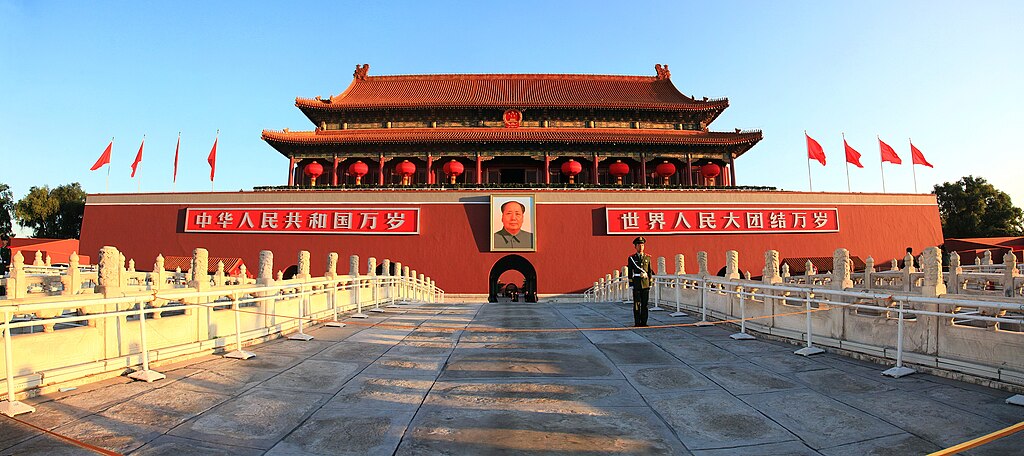












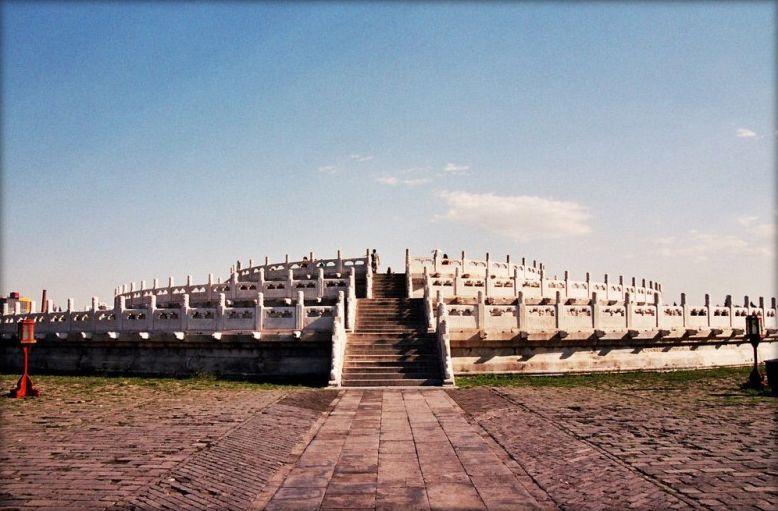
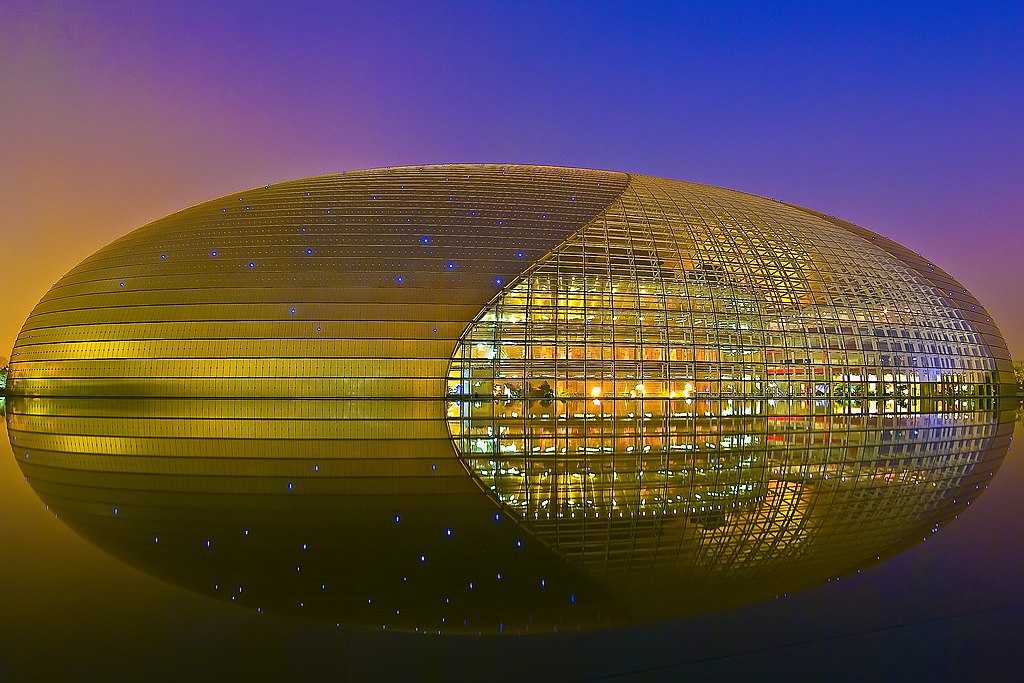
.JPG/640px-Outside_NCPA_Opera_House_(20150409173436).JPG)
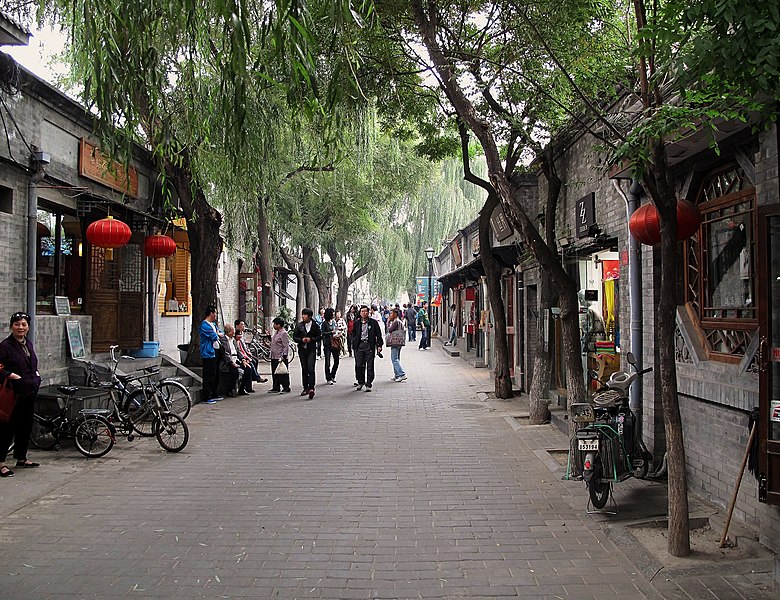





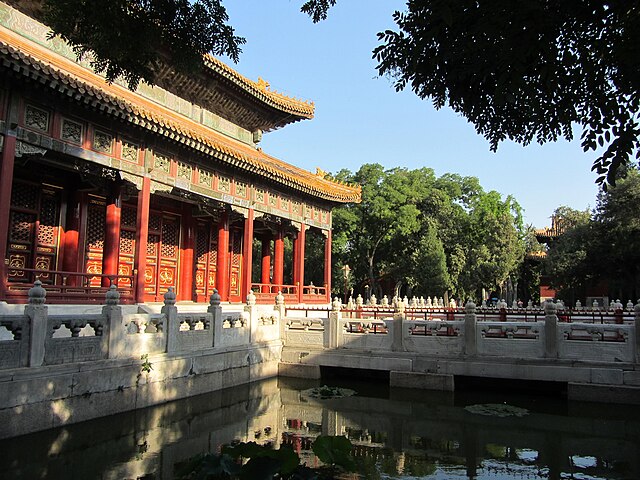
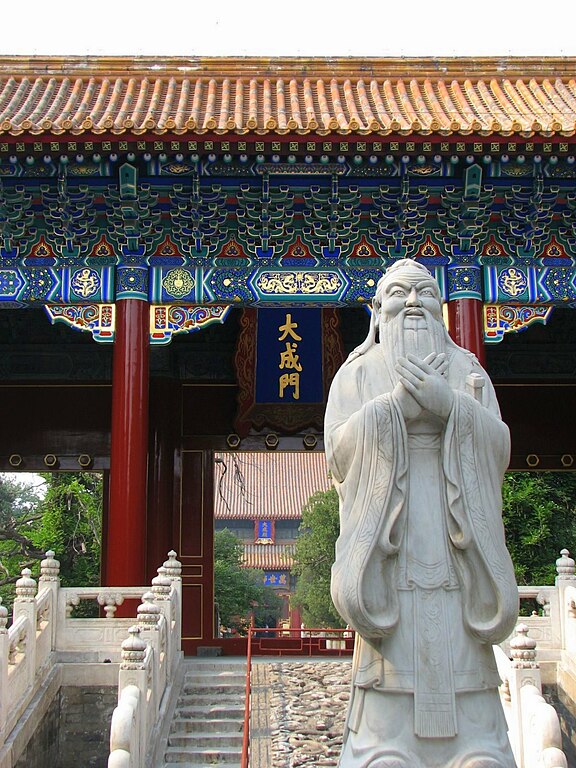



_-_Beijing)_(115760815).jpg)


